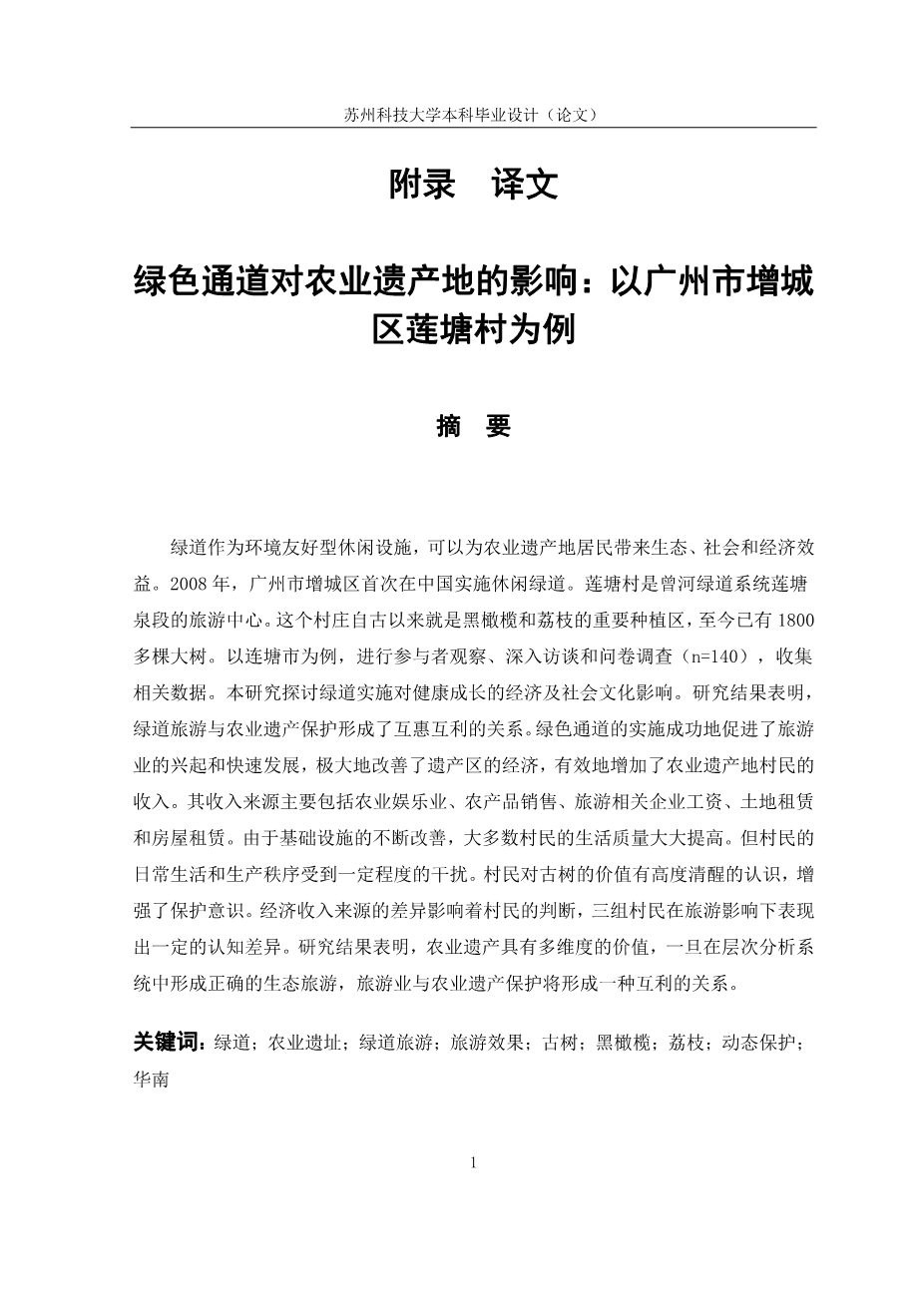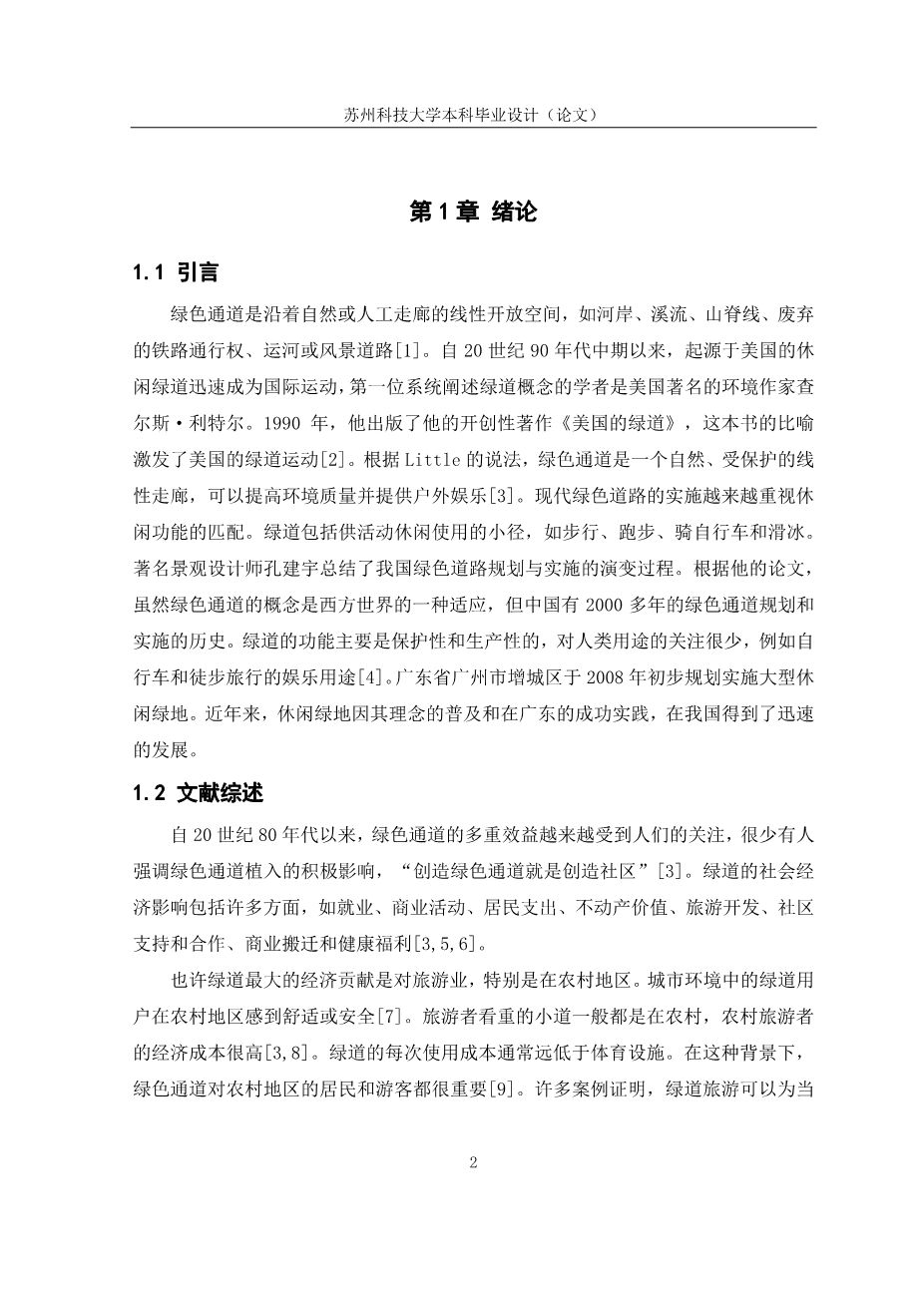Greenway Implementation Influence on Agricultural Heritage Sites (AHS): The Case of Liantang Village of Zengcheng District, Guangzhou City, China
Abstract
As environment-friendly recreational facilities, greenways can bring ecological, social,and economic benefits to the residents of agricultural heritage sites (AHS). Zengcheng District of Guangzhou City first implemented the recreational greenway in China in 2008. Liantang Village is the tourist center of the Liantang Spring segment of Zeng River Greenway system. This village has always been an important planting region of black olive and lychee from ancient times, with more than 1800 large old trees until today. aking Liantang as a case, participant observations, in-depth interviews, and questionnaires (n = 140) are performed to collect relevant data. This study explores the economic and sociocultural influences of greenway implementation on AHS. Findings reveal that greenway tourism and agricultural heritage conservation form a mutually beneficial relationship. The greenway implementation successfully prompts the emergence and rapid development of tourism which significantly improves the economy of the heritage area and effectively increases the income of the villagers in AHS. The sources of their income mainly include agritainment businesses, agricultural product sales, tourist-related business wages, land leases, and house rentals. Most villagers greatly improve their quality of life because of the continuous infrastructure improvements. However, the daily lives and production orders of villagers are disturbed to some extent. The villagers have a highly sober cognition of the value of old trees, and their protection consciousness is enhanced. The difference in the source of economic income affects the judgment of the villagers, and three groups of villagers exhibit some cognitive differences with the influence of tourism. Results indicate that multi-dimensional values of agricultural heritage can be achieved, and a mutually beneficial relationship will then be formed between tourism and agricultural heritage conservation as soon as the correct eco-tourism is developed in AHS.
Keywords: greenway; agricultural heritage site (AHS); greenway tourism; tourism effect; old tree;black olive; lychee; dynamic conservation; southern China
1. Introduction
Greenways are linear open spaces along natural or artificial corridors, such as riverfronts, streams, ridgelines, abandoned railroad right-of-ways, canals, or scenic roads [1]. Recreational greenways that originated in the USA have rapidly become an international movement since the mid-1990s. The first scholar who systematically expounded on the concept of greenway is Charles Little, a famous American environmental writer. In 1990, he published his seminal book, Greenways for America, the metaphor that has galvanized the greenway movement in America [2]. According to Little, a greenway is a natural, protected linear corridor that improves environmental quality and provides outdoor recreation [3]. The implementation of the modern greenway increasingly attached importance to matching leisure functions. Greenways include trails for active recreational use, such as walking, running, bicycling, and skating. Kongjian Yu, a famous landscape architect, summarized the evolution of greenway planning and implementation in China. Based on his paper, although the concept of the greenway is an adaptation from the Western world, the Chinese have a history of more than 2000 years of greenway planning and implementation. The functions of greenways are mainly protective and productive, with minimal concern for human uses, such as recreational uses of cycling and hiking [4]. Zengcheng District of Guangzhou City, Guangdong Province, initially planned and implemented large scale recreational greenways in 2008. Nowadays recreational greenways have spread rapidly in China because of the popularity of its concept and its successful practice in Guangdong. 1.1 Literature Review
The multiple benefits of greenways have attracted increased attention since 1980s. Little emphasized the positive influence of greenway implantation by saying, “to make a greenway is to make a community” [3]. The socioeconomic influences of greenway include many aspects, such as employment, commercial activity, resident expenditures, real property values, tourism development, community support and partnership, business relocation, and health benefits [3,5,6].
Perhaps the greatest economic contribution of greenways is for tourism, especially in rural areas. Greenway users in urban settings feel comfortable or safe in rural areas [7]. Trails valued by tourists generally tend to be in rural areas, and the economic cost of tourists in rural areas is significantly high [3,8]. Greenways generally have a far lower cost per use than sports facilities. Within this context, greenways are of importance to the residents and tourists in rural areas [9]. Many cases have proven that greenway tourism can bring rich economic returns to local communities. Deenihan et al. analyzed the usage of a pilot greenway (cycle way, 42 km) in a rural environment in Ireland. In terms of increased tourist expenditure in the area, the facility brings approximately one million euros from tourists annually, providing the facility a payback period of six years [10]. Although farmers and non-farmers agree on the necessity to keep greenways as part of their cultural landscape, the attitude of rural residents toward the development of greenway tourism is different [11]. In Swedish agricultural areas, farmers with a negative attitude usually have unfortunate experiences of people damaging their crops. They also worry about safety. However, some farmers are positive. They like the idea of people coming to the farm to experience farming at close range, watc
剩余内容已隐藏,支付完成后下载完整资料


英语译文共 15 页,剩余内容已隐藏,支付完成后下载完整资料
资料编号:[437543],资料为PDF文档或Word文档,PDF文档可免费转换为Word


